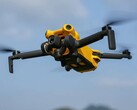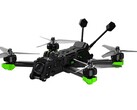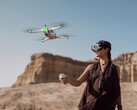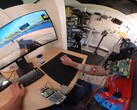Uber is giving drone deliveries another try, this time teaming up with Israeli startup Flytrex to make it happen. The two companies plan to launch pilot tests for Uber Eats orders in select U.S. markets before the end of 2025, with Uber also putting some money into Flytrex, though the amount was described as not material.
This isn’t Uber’s first attempt at airborne deliveries. Back in 2019, the company experimented with drones through its Elevate division, but strict regulations made scaling the idea impossible. Eventually, Uber sold Elevate to Joby Aviation, which now focuses on electric air taxis. Things have shifted since then. The FAA has started granting approval for a handful of operators to fly drones Beyond Visual Line of Sight, which is essential for broader commercial use.
Flytrex is among those with approval and already has experience in the U.S., having completed more than 200,000 suburban deliveries across states like North Carolina and Texas. The new trials will add drones into Uber’s existing delivery network that already relies on cars, bikes, couriers, and even sidewalk robots. Flytrex drones are built to handle lighter loads, up to around 3 kilograms, and can cover short routes in just a few minutes.
In past operations, deliveries have sometimes landed on doorsteps in under five minutes, which is the sort of speed Uber is banking on to attract customers. Alongside speed, the company also points to less congestion on the roads and lower emissions as advantages over conventional ground delivery. Uber is also re-entering a race that also includes Amazon, Walmart, and DoorDash, all of which are testing their own drone delivery systems. The difference this time is that the technology is more reliable, the regulatory framework is starting to evolve, and companies like Flytrex already have meaningful operational experience.
If you happen to live in one of the first test areas, you may soon have the choice of getting smaller food orders or essentials dropped off by drone. Availability will depend on location, weather, and demand, and pricing may differ from a standard delivery. What Uber learns in these early tests will determine how fast drones become a regular feature in its service.
















